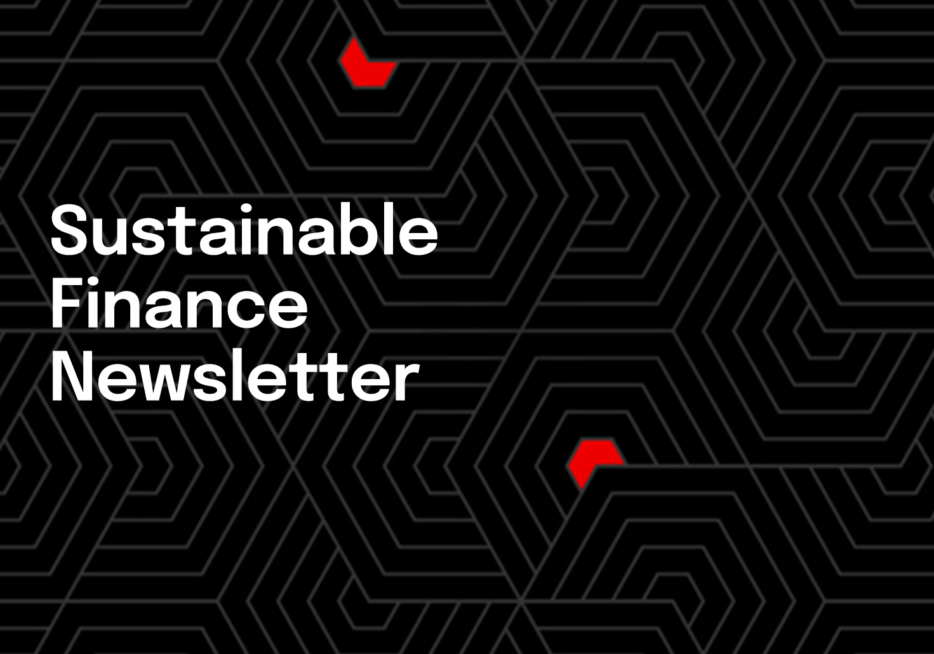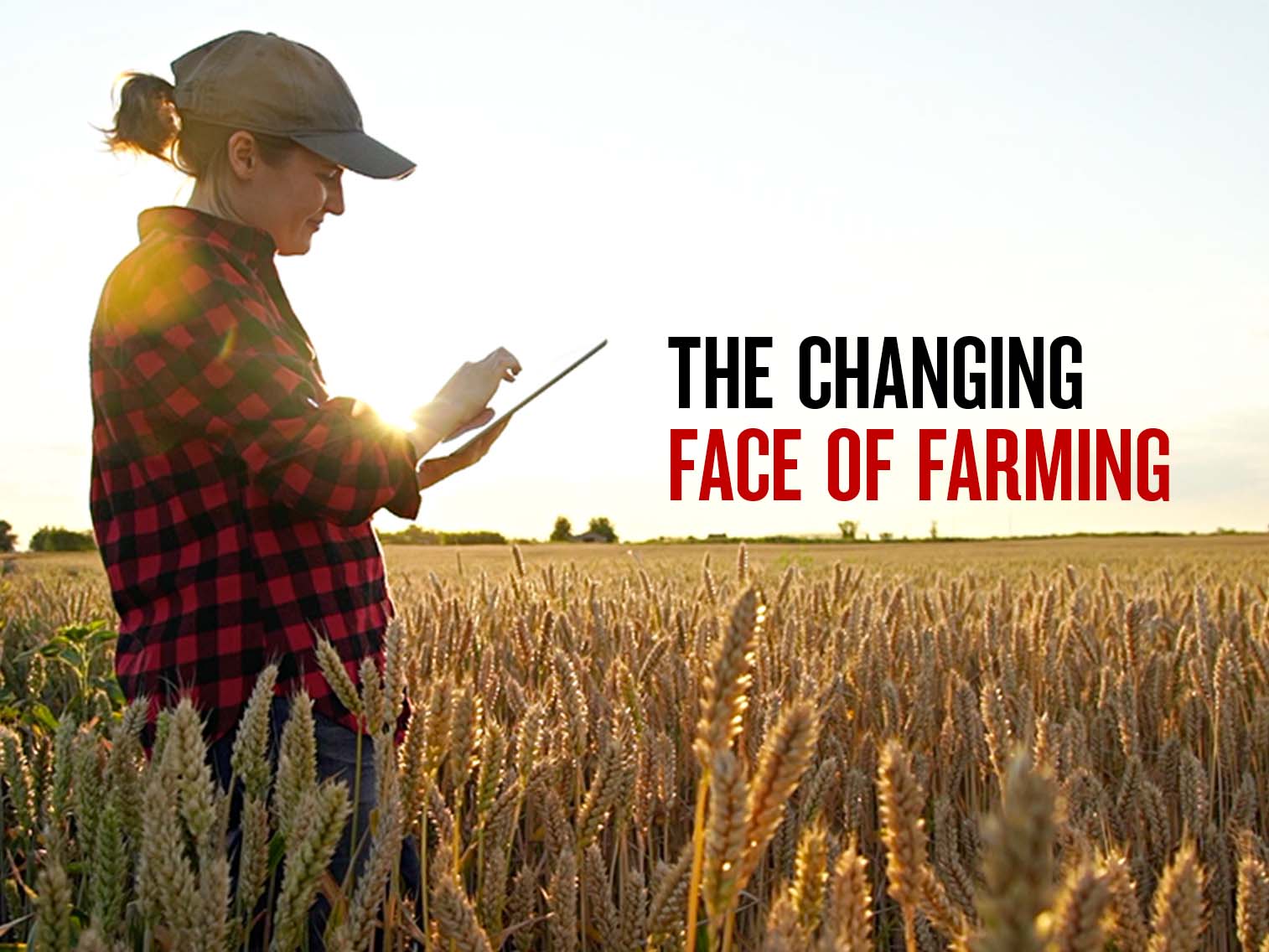Welcome to NAB’s newsletter on the Sustainable Finance market from an Australasian perspective.


Insight
Sustainable practices are driving much of the innovation that’s changing the face of Australian agriculture. Here’s what that evolution looks like in practice.

Sustainability is now part of farming’s vocabulary, but what that actually means in practice is rapidly evolving, as consumer demands, dynamic markets and new technology spur even greater levels of innovation in Australian agriculture.
Bel Quince, NAB Agribusiness Strategy Executive, says that “the market and consumer expectations are changing both domestically and globally. Sustainability is a big part of that trend.”
Melinee Leather, who with her husband Rob, son Adam, and daughter-in-law Chloe, runs a collection of properties in Central Queensland totalling over 17,000 hectares plus a herd of some four and a half thousand cattle, is one farmer who was intimately engaged with sustainability long before it became a buzzword.
“We’ve always been very mindful of looking after our environment and giving our animals the best care, and looking after our family, our people,” she states. “It’s been front and centre for us throughout our whole business. It’s helped us get to where we are today, I believe.”
Using their decades of experience on the land, and in collaboration with the Department of Agriculture and Fisheries, industry groups such as the MLA and local community groups, the Leathers have turned principles into practice and are at the forefront of innovation in sustainable beef production.
In part, that’s simply low-stress husbandry and handling, and conscientious land management that results in great outcomes for the bottom line, as well as the environment. On Barfield Station, a breeding and finishing property, for example, the Leathers choose not to use fertilisers or prophylactic antibiotics.
But it also involves active research and investment in new technology and practices to stay ahead of the curve, minimise their environmental impact, and turn out a better and more environmentally friendly product for their customers.
That can be as simple as switching the diesel-powered water pumps over to solar. But it could also mean benchmarking on-farm emissions and sequestration through soil sampling, plus auditing plant biomass and biodiversity across the property. The Leathers are also participating in the Queensland Government’s ‘From Method to Markets’ pilot project, which supports graziers to rigorously assess their properties with the potential to participate in ecosystem services markets.
Having that data in hand isn’t just about accessing payments; it also allows farmers to make more informed decisions. The Leathers have planted leucaena, a drought-tolerant forage shrub that’s high in protein and can reduce enteric emissions by up to 40 per cent. But leucaena will only thrive in certain soils and under particular micro-climatic conditions; having that information before developing a planting strategy can be crucial.

Although innovation in sustainable farming is not the domain of any particular group, Leather says that young and female farmers are increasingly more visible in leadership.
Quince agrees that innovation in agriculture is coming from diverse sources, including universities and big data companies.
But she says a large portion is driven by “farmers that are solving their own problems by innovating”.
“That’s like-minded people across the industry that have connected through farming enterprises, throwing capital in and investing and developing solutions to their own day-to-day pain points,” she adds.
“You don’t get closer to the life of a beast than the farmer themselves. There’s a lot of work that can be done in a lab, but farmers know the land better than any. They live, eat and breathe it daily.”
For Leather, “collaboration is really important, so the more people we can work with, the better”.
Specialised tasks on Barfield Station, like taking soil cores or setting up automated weather stations, can require bringing in outside expertise, but it’s the farmer who ultimately has to use that data to build their projects and practices.
“We really have to drive it and we have to be the ones on the ground doing the work,” Leather says.
Consumer demand for sustainable practices is a core factor driving innovation in Australian farming.
“We’re always mindful of our end customers, even though we don’t have a direct relationship with them,” Leather says. “We want to ensure that we’re meeting their needs and expectations.”
According to Quince, consumer demands around traceability and provenance are producing a boom in tech innovation. Supermarket shoppers aren’t content to hear that their food producers are acting sustainably; they want it proven.
“It’s not just certification, based on self-assessment. It’s about the move to independent, tamper-proof, digital verification,” she explains.
One of the major emerging spaces requiring this kind of transparency and verification is the global carbon offset market. NAB is a founding partner of Project Carbon, a blockchain-based marketplace to facilitate accounting and transacting for carbon offsets.
But for farmers, carbon-reduction projects are about more than selling carbon credits. Along with the productivity and efficiency dividends, there’s also the simple proposition that increased soil carbon means increased production, and that international markets are starting to factor carbon into prices and tariffs.
“We’re more interested in the co-benefits, improving our environmental footprint and improving our animal welfare,” Leather says.
“I think market access will also be a big thing. And I think sometimes, as producers, we don’t think at that level. Or we don’t think it’s going to affect us. But 70 per cent of our product is exported – we have to make sure that we lead the world and that we don’t have tariffs put upon us.”
Yet despite the many innovations Australian agriculture is taking up, the heart of the industry remains the same: farming is farming.
“Our core business is food security,” Leather says. “Those of us that are in that business of producing food have to keep that as their core business. Which doesn’t mean we ignore the effects of climate change. What’s important is that we listen to the science, and we look for solutions, and we try to move forward. Change is just something that’s part of our business.”
Quince says that NAB is “lined up to continue to help our customers capitalise on the emerging opportunities, while tackling the risks with them along the way.”
“We’re seeing our customers like Melinee tackle market leading efforts on farm. Our role is to understand their ambitions and help our Australian producers build a sustainable future for their businesses, families and the sector as a whole.”
© National Australia Bank Limited. ABN 12 004 044 937 AFSL and Australian Credit Licence 230686.